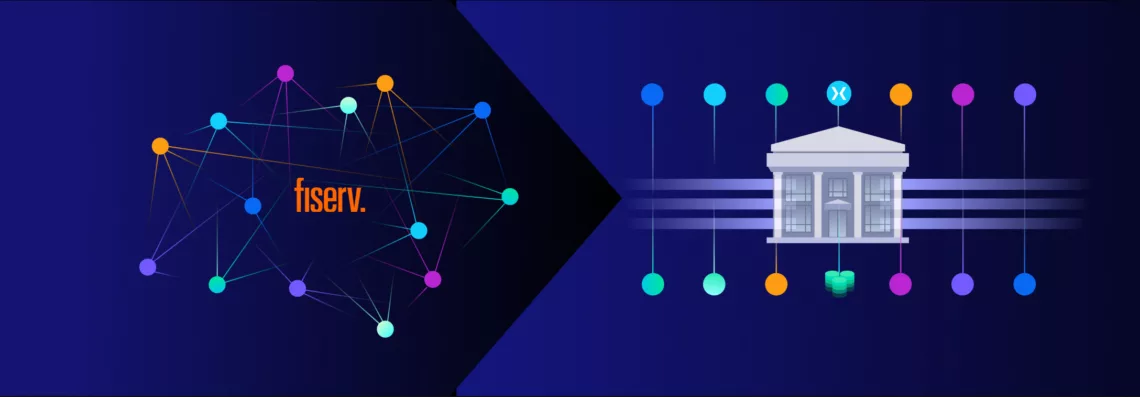Overview
PortX plays a vital role in facilitating key integrations for our bank and credit union clients, leveraging a versatile API layer that accelerates the creation and deployment of innovative products and services. We have gathered valuable knowledge and insights from our extensive experience with various banking cores. This article presents insights on the integration process with Fiserv’s Portico banking core for credit unions, exploring it across the following dimensions:
- Customer Prerequisites
- Administrative Requirements
- Technical Effort
- Documentation Quality
- Support & Troubleshooting
We have provided details about our experience with each of these topics and then scored them based on quality and difficulty level. Skip to the end if you would like to see our overall score.
For FIs considering a new core solution, we recommend beginning with our insightful blog: 10 Fundamentals to Avoid Catastrophe on Your Next Banking Core Integration.
Customer prerequisites
Integrating with Fiserv Portico requires careful preparation and a clear understanding of the necessary steps. As you embark on this process, it’s essential to be aware of several key aspects that will facilitate a smooth and efficient integration. Here are the vital points you need to consider:
- Technical Contact on Fiserv Portico Side: Having a designated technical contact within Fiserv Portico is beneficial. This person can assist with API-related queries, resolving bugs, and managing credentials.
- Integration Using “Access Advantage” Web Service: Although this SOAP/XML-based service is somewhat legacy, it remains a common choice among credit unions for integration with Fiserv Portico. However, be open to exploring other, potentially newer, integration methods.
- Understanding the Sandbox Environment: Fiserv Portico’s sandbox environment, known as “Model Office,” is not specific to any single credit union but provides a general testing ground. Additionally, each credit union has its test environment for more specific trials.
- Requesting Environment Refresh for Live Data: To import real, live data from a credit union’s production environment into the test environment, submitting an environment refresh request to Fiserv is necessary. This process can be time-consuming, often taking weeks, so initiating this step as early as possible is advisable.
- Comprehensive Requirements Gathering: A crucial part of the integration process involves thoroughly understanding the functions you’ll need to perform on Portico and the data you need to retrieve. This understanding will guide which web service functions your API should integrate with and help in mapping fields between the systems.
Administrative Requirements
Integrating with Portico entails a set of administrative requirements that ensure high quality and effectiveness in the integration process. One significant aspect is the review of the integrating code. This review is advantageous as it guarantees quality and provides support throughout the integration, ensuring that all fields are mapped accurately. Moreover, the production credentials are typically issued only after comprehensive testing in the User Acceptance Testing (UAT) environment and after the code is thoroughly reviewed.
Interestingly, the Portico team does not directly review the code repository. Instead, they focus on understanding the overarching architecture and functioning of the code, as well as the methods planned for interacting with the core. This evaluation is primarily based on the outcomes observed during UAT with clients, particularly after the middleware connector has been developed and deployed in a staging environment. This approach underscores a focus on practical results and real-world application efficacy, ensuring that the integration is theoretically sound and operationally robust.
Technical Effort
The integration with Fiserv Portico presents a comprehensive array of technical requirements and considerations, each critical to the successful implementation and operation of the system. This section delves into various aspects of the integration process, highlighting solutions, data structure, service design, and the intricate nature of the tasks involved.
Authentication Process
Authentication was uncomplicated with Portico, with no need for a VPN connection to the core systems. Portico included credentials in the SOAP message’s “SignonRq” section and information about the credit union, such as UserId, TellerId, StationId, branch, and other details.
Request Routing and Traffic Management
All requests were sent to a hosted Fiserv Portico endpoint, which routed them based on the specified credit union information. Portico emphasized the necessity for careful traffic management to avoid system overload, which could impact all clients.
Data Structure and Service Design
The integration used a SOAP/XML service, with essential WSDL and XSD files defining the structure.
Documentation Quality
The quality of the Portico documentation is commendably decent, offering a solid foundation for developers working on integration. It thoroughly details all the necessary fields and their meanings and, in several cases, even includes potential values, mostly ENUMs. This comprehensive approach helps understand the structure and expected data formats, facilitating smoother integration.
The documentation format is somewhat traditional, primarily provided in Word documents and XSD/WSDL files. A few practical examples are included, clarifying the implementation process. Despite these resources, Portico does not offer a dedicated web portal or an online documentation resource, which could pose a minor drawback for developers who prefer digital and interactive documentation formats.
Nonetheless, if developers can access this documentation and the Model Office (sandbox) environment, they are well-equipped to begin their integration journey. The sandbox environment, in particular, is a valuable asset, offering a hands-on experience to test and refine their understanding of the Portico system in a practical, risk-free setting. Overall, while there’s room for modernizing the documentation delivery, its content, and the accompanying sandbox environment provide a robust starting point for effective integration.
Support & Troubleshooting
The support and troubleshooting experience with Fiserv’s Portico system is notably efficient and helpful. Fiserv stands out for its prompt response times, swiftly responding to any issues encountered. Their support team is well-equipped to assist with various problems, contributing significantly to a smoother integration process. This level of support is crucial, especially when dealing with complex financial systems.
One of the strengths of Portico’s API is the clarity of its error messages. This clarity is invaluable for developers as it aids in quickly identifying and rectifying issues, thereby reducing downtime and frustration. However, there’s a notable operational aspect to be aware of: the credentials provided for accessing a credit union’s system expire occasionally and require renewal by Fiserv. This scenario occurred more than once, so remember this during the integration process. If requests suddenly stop working, expired credentials could be the culprit.
In addition to the responsive support, Fiserv enhances the integration experience with resources like the Model Office (sandbox environment). This critical environment allows developers to test and refine their integration in a controlled setting without affecting real data or operations. The combination of Fiserv’s attentive support, clear communication through their API, and a practical sandbox environment significantly eases the challenges typically associated with financial system integrations.
Overall evaluation
Based on our experience with the Fiserv Portico core, we have scored each area of the integration experience on a scale of 1 (very poor) to 5 (excellent). Here is the breakdown for integrating with Portico:
| Criteria | Score | Summary |
| Customer Prerequisites | 4 | The primary challenge encountered is the test environment refresh, which should be addressed as early as possible to avoid delays. |
| Administrative Requirements | 5 | Integrating with Portico involves comprehensive administrative processes, including code review and UAT testing, to ensure high-quality and effective integration, focusing on practical application and operational robustness. |
| Technical Effort | 4 | A SOAP service, while somewhat outdated and not as user-friendly as REST, is manageable overall and not excessively challenging. |
| Documentation Quality | 4 | The SOAP nature necessitates that the WSDL/XSD files comprehensively display all potential fields, resulting in extensive documentation. However, the accompanying Word files need more detailed information, and unlike platforms like Salesforce, there is no web portal available for easy access to documentation. |
| Support & Troubleshooting | 5 | Fiserv is consistently prompt in its responses and readily assists with any issues. Additionally, the error messages from their API are generally clear and informative. |
| Final Score | 4.4 | A multifaceted process that includes handling extensive SOAP documentation, undergoing rigorous code review and UAT testing for quality assurance, and managing occasional test environment refresh challenges, all supported by Fiserv’s responsive and helpful service. |
If you want to learn about our approach to Banking Core Integration, visit our site or contact our team today. We can also answer your questions about Integration Manager – our digital core banking integration software platform.






